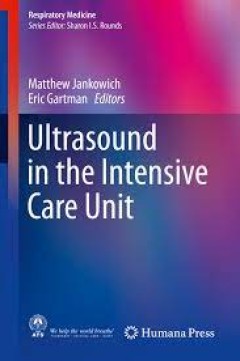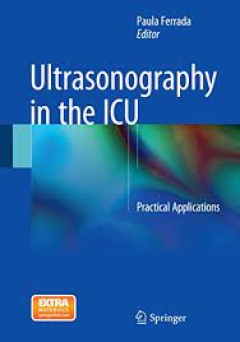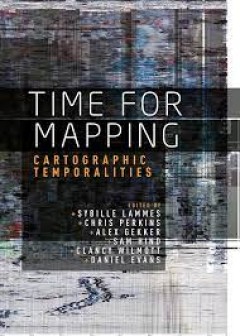Filter by

Ultrasound in the Intensive Care Unit
Ultrasound in the Intensive Care Unit explores the current state of evidence supporting use of bedside ultrasound for procedural guidance and for the critical care-focused assessment of a variety of organ systems. This text covers standard practice areas, such as ultrasound guidance for vascular access in the ICU, as well as novel, less well-known applications such as the use of ultrasound for …
- Edition
- -
- ISBN/ISSN
- 978-1-4939-1723-5
- Collation
- -
- Series Title
- -
- Call Number
- -

Ultrasonography in the ICU Practical Applications
This text presents a basic guide of the principles and applications of ultrasound in the critical care setting. The text also addresses the basic and clinical uses of ultrasound, including clinical cases at the end of each of the 7 sections of the clinical subdivisions. The final chapters focus on the issues of training, certification, credentialing and billing. These discussions make the text …
- Edition
- -
- ISBN/ISSN
- 978-3-319-11876-5
- Collation
- -
- Series Title
- -
- Call Number
- -

Decolonizing Diasporas : Radical Mappings of Afro-Atlantic Literature
Decolonizing Diasporas proposes a new way to read the literary and cultural productions of the Afro-Atlantic. Mapping literature from Spanish-speaking Sub-Saharan African and Afro-Latinx Caribbean diasporas, Figueroa-Vásquez argues that the works of diasporic writers and artists offer ways of imagining new worldviews which dismantle the logics of colonial modernity. Utilizing women of color fe…
- Edition
- -
- ISBN/ISSN
- 9780810142435
- Collation
- 304 halaman
- Series Title
- -
- Call Number
- 800 FIG d

Controversies in Cardiology
This book considers several clinical and interventional topics for which there is either uncertainty, continued debate and/or no consensus based on current guidelines. Leading international experts explore each controversy, probing the existing evidence and current opinions. Each chapter outlines the unresolved issues and includes a balanced and scholarly discussion of the subject, concluding w…
- Edition
- -
- ISBN/ISSN
- 9783319204154
- Collation
- xviii, 417 pages
- Series Title
- -
- Call Number
- 616.12

Managing Chronicity in Unequal States Ethnographic perspectives on caring
By portraying the circumstances of people living with chronic conditions in radically different contexts, from Alzheimer’s patients in the UK to homeless people with psychiatric disorders in India, Managing Chronicity in Unequal States offers glimpses of what dealing with medically complex conditions in stratified societies means. While in some places the state regulates and intrudes on the m…
- Edition
- -
- ISBN/ISSN
- 9781800080287
- Collation
- -
- Series Title
- -
- Call Number
- -

Liquid Ecologies in Latin American and Caribbean Art
This interdisciplinary book brings into dialogue research on how different fluids and bodies of water are mobilised as liquid ecologies in the arts in Latin America and the Caribbean. Examining the visual arts, including multimedia installations, performance, photography and film, the chapters place diverse fluids and systems of flow in art historical, ecocritical and cultural analytical contex…
- Edition
- -
- ISBN/ISSN
- 9780367198985
- Collation
- -
- Series Title
- -
- Call Number
- -

Time for mapping Cartographic temporalities
"The digital era has brought about huge transformations in the map itself, which to date have been largely conceptualised in spatial terms. Novel objects, forms, processes and approaches have emerged and pose new, pressing questions about the temporality of digital maps and contemporary mapping practices: in spite of its implicit spatiality, digital mapping is strongly grounded in time. This co…
- Edition
- -
- ISBN/ISSN
- 9781526122520
- Collation
- -
- Series Title
- -
- Call Number
- -

Global Water Issues and Insights
This book brings together some of the world’s leading water researchers with an especially written collection of chapters on: water economics; transboundary water; water and development; water and energy; and water concepts.
- Edition
- -
- ISBN/ISSN
- -
- Collation
- -
- Series Title
- -
- Call Number
- -

Experimenting for Sustainable Transport
Technological change is a central feature of modern societies and a powerful source for social change. There is an urgent task to direct these new technologies towards sustainability, but society lacks perspectives, instruments and policies to accomplish this. There is no blueprint for a sustainable future, and it is necessary to experiment with alternative paths that seem promising. Various ne…
- Edition
- -
- ISBN/ISSN
- 9781134488179
- Collation
- -
- Series Title
- -
- Call Number
- -

Sexual and Reproductive Health and Rights in India Self-care for Universal H…
This open access book addresses self-care on sexual and reproductive health and rights and HIV prevention and treatment in the most marginalized and vulnerable communities. Case studies and personal narratives are used to share their perspectives and experiences, sources of information for self-care products, motivations for self-care, and challenges and outcomes. Self-care provides the way to …
- Edition
- -
- ISBN/ISSN
- 9789811645785
- Collation
- -
- Series Title
- -
- Call Number
- -
 Computer Science, Information & General Works
Computer Science, Information & General Works  Philosophy & Psychology
Philosophy & Psychology  Religion
Religion  Social Sciences
Social Sciences  Language
Language  Pure Science
Pure Science  Applied Sciences
Applied Sciences  Art & Recreation
Art & Recreation  Literature
Literature  History & Geography
History & Geography